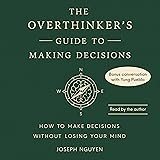Have you ever found yourself at the end of a busy day, feeling exhausted but wondering what you actually accomplished? Many people create long to-do lists, hoping to tackle everything. However, these lists often feel overwhelming. They can sometimes lead to more stress than progress. It is a common experience, felt by many in their daily routines.
In the video above, Dr. Cal Newport and Dr. Andrew Huberman discuss alternative approaches. A focus is placed on more effective time management strategies. They explore methods that prioritize structure and long-term goals. These insights can transform how personal productivity is viewed. A different path to daily efficiency is offered.
Beyond the To-Do List: Embracing Time Blocking for Better Productivity
Traditional to-do lists are familiar tools for many. They provide a simple inventory of tasks. Yet, they often lack a crucial element: time. A to-do list might say “Write report,” but it doesn’t specify *when* that report will be written. This omission can leave tasks floating in an uncommitted space. As Dr. Cal Newport explains, this approach is often less efficient. It separates tasks from available time.
Time blocking offers a powerful alternative. With time blocking, specific tasks are assigned to specific blocks of time. It is like scheduling a meeting, but with yourself. For instance, a 90-minute slot might be dedicated to “writing.” Another hour could be set aside for “email management.” This method creates a clear roadmap for the day. Tasks are given a concrete place within the schedule.
This approach transforms a vague intention into a firm commitment. A to-do list is merely a wish list. A time-blocked schedule becomes a blueprint for action. It is a plan that respects the finite nature of time. This method ensures that important work is prioritized. Less critical tasks are also given their due. Time blocking greatly improves daily focus.
Fixed Schedule Productivity: Setting Boundaries for Success
A key concept discussed is “fixed schedule productivity.” This philosophy involves committing to a set number of work hours. For example, Dr. Newport mentions a 5:30 p.m. cutoff. Work is contained within these defined limits. This boundary is chosen deliberately. It helps create a healthy work-life balance.
The magic of fixed schedules lies in their constraints. When time is limited, innovation is often sparked. Think of a river contained by its banks. It flows with greater force and direction. Similarly, fixed hours compel individuals to be more efficient. Creative solutions are found for task completion. Procrastination is minimized when deadlines are firm.
This approach forces careful consideration of commitments. Only necessary projects or meetings are accepted. Less important demands are declined or delegated. The focus remains on high-value activities. Productivity is not about working more hours. Instead, it is about working smarter within defined periods. A fixed schedule helps achieve this goal.
Integrating Health into Your Productive Schedule
Sustainable productivity cannot exist in a vacuum. It must be supported by physical and mental well-being. Dr. Huberman emphasizes the critical link between exercise and cognitive function. This connection is now widely understood. Exercise is not just a leisure activity. It is a vital component of a sharp mind.
Dr. Newport integrates exercise thoughtfully into his day. A pre-dinner workout is described. This 45-50 minute session serves a dual purpose. It provides physical activity and acts as a psychological transition. It is a bridge between the demands of work and the relaxation of family time. This routine helps to compartmentalize the day. It allows for mental refreshment.
Sleep is another foundational pillar of personal productivity. Dr. Newport shares his experience with insomnia. This challenge profoundly shaped his approach to work. It highlighted the fragility of daily output. Reliance on intense daily effort becomes risky. Sleep issues can disrupt consistent performance. Prioritizing rest is therefore crucial for sustained focus.
Slow Productivity: A Long-Term Vision for Lasting Impact
The concept of “slow productivity” emerged from these experiences. It shifts the focus from daily frantic activity to long-term progress. Success is not measured by immediate output. It is about sustained effort over weeks, months, and even decades. This perspective offers resilience. It accommodates life’s inevitable disruptions.
Slow productivity means accepting that some days will be less productive. However, the overall trajectory remains forward. It is like building a magnificent cathedral. Each day, a few bricks are laid with precision. The project takes years, but the result is enduring. This approach removes the pressure of constant high performance. It cultivates a steady, sustainable pace.
This philosophy is particularly valuable for complex projects. Writing a book is a good example. Every single day does not need a chapter completed. What matters is consistent work over time. The goal is to make significant progress each month. Slow productivity allows for adaptation. It embraces the natural ebb and flow of life and energy.
The Undeniable Power of Deep Work
At the heart of both fixed schedules and slow productivity lies “deep work.” This refers to focused, uninterrupted activity. It is performed in a state of distraction-free concentration. Deep work pushes cognitive capabilities to their limit. It creates new value and improves skills. It is the type of work that truly moves the needle forward.
Dr. Newport makes a point to schedule deep work regularly. His goal is five days a week. This often involves starting the day with intense focus. The early morning hours are frequently chosen. This period is often free from interruptions. It is like an athlete training intensely for a competition. These dedicated sessions build intellectual muscle.
Deep work contrasts sharply with “shallow work.” Shallow work includes emails, administrative tasks, and meetings. While necessary, these activities rarely create lasting value. Prioritizing deep work ensures that significant progress is made. It helps achieve ambitious long-term goals. A deliberate effort is needed to protect these valuable blocks of time.
Practical Steps to Optimize Your Daily Schedule
Implementing these strategies can feel daunting. However, several practical steps can be taken. First, assess your current commitments. Understand where your time is presently allocated. This provides a baseline. Next, identify your most productive hours. These are often when focus is highest. Then, carve out your dedicated deep work blocks.
Consider your personal “cutoff time.” Set a firm boundary for your workday. This encourages efficiency within those hours. Next, integrate essential health routines. Schedule exercise and prioritize sufficient sleep. These are not optional extras. They are integral to sustained performance. Remember that life brings changes.
Be adaptable with your schedule. The framework provides structure. However, flexibility is also needed. Adjustments will be required for family needs, unexpected events, or personal challenges. The overall goal is consistent progress over time. Do not despair over an unproductive day. Focus on the larger journey of effective time management.








